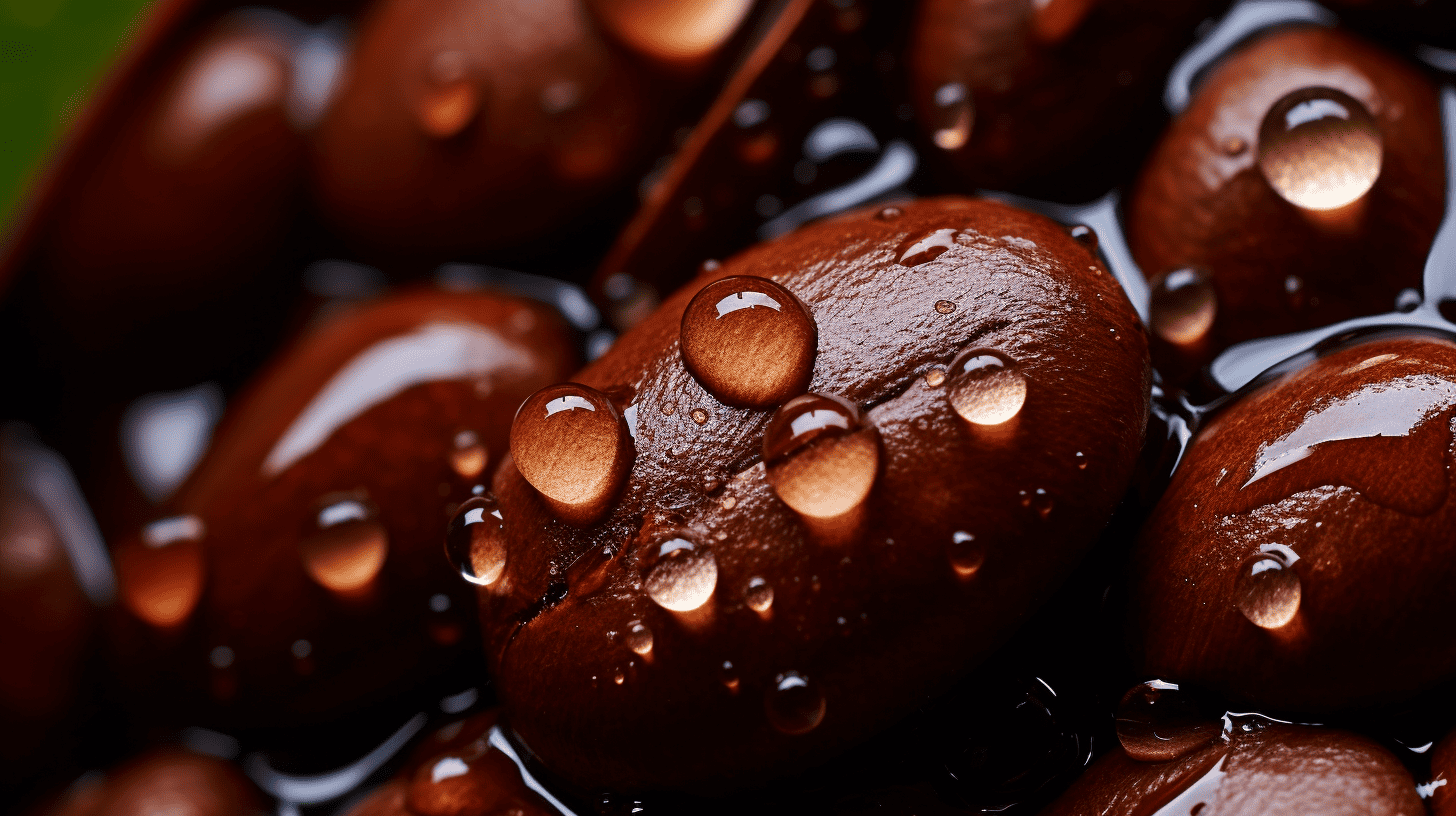Coffee creamer is a popular addition to coffee that can significantly increase its calorie count. Whether you prefer liquid, powdered, or non-dairy options, calories in coffee with cream are essential to be aware of in your cup. Some coffee creamers contain high amounts of sugar and artificial ingredients that can contribute to weight gain and other health issues. In this blog post, we’ll explore the different types of coffee creamers and their calorie contents so that you can make informed choices about your daily calorie intake.
Liquid coffee creamers are a convenient option for those who want to add flavor and creaminess to their coffee without measuring out portions. However, they often contain high amounts of sugar and calories. For example, a single serving (one tablespoon) of flavored liquid coffee creamer can contain up to 35 calories and 5 grams of sugar. If you use multiple servings per cup of coffee, these calories can add up quickly.
Cream Comparisons and Nutrients
| Coffee Creamer Brand | Calories per Tablespoon | Carbs per Tablespoon |
|---|---|---|
| International Delight French Vanilla | 35 calories | 5 grams of carbs |
| Nestle Coffee-Mate Original | 30 calories | 5 grams of carbs |
| Silk Almond Creamer Vanilla | 15 calories | 1 gram of carbs |
| Califia Farms Almond Milk Creamer Hazelnut | 15 calories | 1 gram of carbs |
| Starbucks Almond + Oat Milk Creamer (Caramel Macchiato flavor) | 30 calories | 5 grams of carbs |
| Nutpods Dairy-Free Creamer French Vanilla | 10 calories | 0 grams of carbs |
| So Delicious Dairy-Free Coconut Milk Creamer French Vanilla | 20 calories | 1 gram of carbs |
| Natural Bliss Vanilla | 35 calories | 5 grams of carbs |
| Land O’Lakes Mini Moo’s Half & Half | 10 calories | 1 gram of carbs |
| Great Value Original Powder Coffee Creamer | 10 calories | 1 gram of carbs |
Remember that coffee creamers’ calorie and carbs can change a lot based on the brand and flavor. It’s key to think about coffee creamers’ calorie and carb content because they can quickly add up and lead to weight gain and spikes in blood sugar if you have too much.
Powdered coffee creamers are another popular option for those who want convenience without sacrificing taste. However, like liquid creamers, they can also be high in calories and sugar. A single serving (one teaspoon) of powdered coffee creamer contains 10-20 calories depending on the brand and flavor.
Non-dairy options such as almond milk or soy milk are becoming increasingly popular as people look for healthier alternatives to traditional dairy products. While these options may be lower in calories than conventional dairy-based creams, they still contain some added sugars that can contribute to overall calorie intake.
Calorie Breakdown: Black Coffee, Half-and-Half, and Nonfat Milk
Black Coffee: Zero Calories
If you’re looking for a low-calorie drink to start your day, black coffee is the way to go. With zero calories in a cup of black coffee, it’s an excellent choice for those who want to keep their calorie intake in check. However, the calorie count can quickly increase if you like your coffee with creamer or milk.
Half-and-Half: 20 Calories per Tablespoon
Adding half-and-half to your coffee will add approximately 20 calories per tablespoon. While it may not seem like much, those calories can add up quickly if you like multiple cups of coffee throughout the day. If you’re trying to watch your calorie intake, consider using less creamer or switching to a lower-calorie option.
Nonfat Milk: 5 Calories per Tablespoon
Non-fat milk is an excellent option for those who prefer milk in their coffee instead of creamer. It has around 5 calories per tablespoon when added to coffee. Nonfat milk is also a great source of calcium and vitamin D. If you’re looking for a low-calorie option that still gives you the benefits of dairy, nonfat milk is an excellent choice.
Ground Coffee: Only 2 Calories per Cup
It’s important to note that ground coffee itself only contains two calories per cup. So if you’re worried about your daily calorie intake but still want to enjoy multiple cups of coffee throughout the day, drinking black coffee is an excellent option.
Be Mindful of Your Ingredients
The number of calories in your cup of coffee will depend on the amount and type of creamer or milk you use. Be mindful of what ingredients you add to your drink and how much you use. Small changes like switching from half-and-half to nonfat milk or reducing the amount of creamer can make a big difference in your daily caloric intake.
Comparing Calorie Counts: Black Coffee, Half-and-Half, and Nonfat Milk
Black Coffee: The Lowest Calorie Option
If you are looking for a low-calorie option, black coffee is the way to go. With an average of only 5 calories per serving, it is the perfect choice for those who want to enjoy their coffee without worrying about their calorie intake. Black coffee is brewed coffee without any added milk or sugar with water.
Not only is black coffee low in calories, but it also contains several nutrients that can benefit your health. For example, coffee contains antioxidants that can help protect your cells from damage caused by free radicals. Caffeine has been shown to improve cognitive function and boost metabolism.
Half-and-Half: A Higher Calorie Option
Half-and-half is a popular choice if you prefer your coffee with a little bit of creaminess. However, it does come with a higher calorie count than black coffee. With an average of 20 calories per serving, half-and-half adds more calories to your drink than black coffee.
While half-and-half does contain more calories than black coffee, it also provides some additional nutrients such as protein and calcium. However, keep in mind that the product of these nutrients are not significant enough to make up for the extra calories.
Nonfat Milk: A Lower Calorie Option
For those who want a creamy taste without all the extra calories, nonfat milk is a great option. It has an average of only 10 calories per serving which makes it a lower calorie option compared to half-and-half.
Nonfat milk also provides several essential nutrients, such as calcium and vitamin D essential for bone health. It contains protein that can help keep you full and satisfied throughout the day.
Syrups and Flavor Options Can Significantly Increase Calorie Intake
While adding syrups or flavor options may enhance the taste of your drink, they can significantly increase the calorie intake of your coffee drink. Some options contain up to 500 calories per serving which can quickly add up if you are not careful.
If you want to add a little bit of flavor to your coffee, consider using natural sweeteners such as honey or maple syrup. These options provide a delicious taste without all the added calories and artificial ingredients.
Key takeaways on coffee syrups and flavor options:
- Coffee syrups provide an excellent means to enhance your coffee with sweetness and additional flavors.
- For each 8 oz cup of coffee, adding 1-2 pumps of syrup is recommended.
- Among the syrup flavors, vanilla is a commonly favored option for coffee.
- Caramel, hazelnut, and mocha are other preferred choices of coffee syrup flavors.
- Coffee syrups can be utilized to create a wide range of coffee beverages, such as lattes, cappuccinos, and iced coffee.
- In addition to coffee, these syrups can be used to flavor other drinks, including tea and hot chocolate.
- Remember to consider the calorie and sugar content when using coffee syrups, as they can sometimes be high in both.
Fat and Calorie Content Differences: Nonfat Milk in Coffee
Nonfat Milk in Coffee: A Healthier Option for Calorie and Fat Watchers
Reducing calorie and fat intake is a common goal for many people who are trying to maintain or lose weight. One way to achieve this goal is by choosing healthier options for the food and drinks we consume daily. Using nonfat milk instead of cream can significantly affect calorie and fat content.
Less Fat Content with Nonfat Milk
The most apparent difference between nonfat milk and cream is their fat content. Cream has significantly more fat than nonfat milk, making it a less healthy option for those watching their fat intake. A single tablespoon of cream contains around 5 grams of fat, while nonfat milk has only 0.1 grams of fat per tablespoon.
Using nonfat milk in coffee can help reduce your daily intake of saturated fats, leading to various health problems such as high cholesterol levels, heart disease, and stroke. By making this simple switch, you can enjoy your coffee without worrying about its negative impact on your health.
Lower Calorie Count with Nonfat Milk
Aside from having less fat content than cream, nonfat milk also has fewer calories per serving. A single tablespoon of cream contains around 50 calories, while nonfat milk only has around 10 calories per tablespoon.
Choosing nonfat milk over cream can be an excellent option for those trying to lose or maintain a healthy weight because it helps reduce their overall calorie intake. By doing so, they create a calorie deficit that can lead to weight loss over time.
Other Benefits of Using Nonfat Milk in Coffee
Aside from being a healthier option than cream using nonfat milk in coffee also provides other benefits:
Whole Milk vs Nonfat Milk: Which Has More Calories in Coffee?
Many people enjoy adding milk for a creamier taste. However, not all milk is created equal we’ll explore the differences between whole and nonfat milk and which has more calories in coffee.
Whole Milk: Creamy and Caloric
Whole milk is popular for those who prefer a creamy texture and rich taste. However, it’s also high in fat and calories compared to other types of milk. A cup of whole milk contains approximately 150 calories, most of which come from fat.
Using whole milk in your coffee can add up to 50 extra calories per cup. While that may not seem like much, if you drink multiple cups of coffee daily, those extra calories can quickly add up. For example, if you drink three cups of coffee with whole milk daily, that’s an additional 150 calories you consume just from your morning beverage.
Nonfat Milk: Lighter and Lower Calorie
Nonfat or skimmed milk is another popular choice for adding to coffee. As the name suggests, nonfat milk contains little to no fat compared to whole milk. A cup of nonfat milk contains around 80 calories – less than half the amount found in a cup of whole milk.
Choosing nonfat or skimmed over whole can save you up to 70 calories per cup of coffee – a significant difference when you consider how many cups you might consume throughout the day.
Making the Switch
If you’re looking to cut down on your calorie intake without sacrificing your daily dose of caffeine, switching from whole to nonfat or skimmed might be worth considering. Not only will it help reduce your overall calorie intake, but it can also be a healthier choice for your heart health.
While whole milk does contain more calories than nonfat or skimmed, it’s important to remember that it’s not necessarily “bad” for you. Whole milk contains essential nutrients like calcium and vitamin D that are important for overall health. However, if you’re looking to cut down on calories in your coffee, switching to nonfat or skimmed is a simple and effective way to do so.
Half-and-Half: How Many Calories in a Cup of Coffee with Half-and-Half?
How Many Calories in a Cup of Coffee with Half-and-Half?
Half-and-half is a popular creamer for coffee that contains equal parts of milk and cream. It’s a great way to add richness and flavor to your morning cup of joe. However, if you’re watching your calorie intake, it’s important to know how many calories are in each serving.
Calorie Count of One Tablespoon of Half-and-Half
Adding just one tablespoon of half-and-half to your coffee can add around 20 calories to your drink. This may not seem like much, but if you’re someone who enjoys multiple cups of coffee throughout the day, those calories can quickly add up.
It’s important to keep in mind that the calorie count can vary depending on the brand and type of half-and-half used. Some brands may have more fat or sugar than others, which can increase the calorie count.
If you’re trying to cut back on calories, consider using a lower-fat alternative such as skim milk or almond milk instead of half-and-half. These options will still provide some creaminess without adding as many calories.
Calorie Count of Two Tablespoons of Half-and-Half
If you prefer a creamier taste, adding two tablespoons of half-and-half will increase the calorie count to approximately 40 calories. While this may not seem like much, it’s important to remember that these extra calories are coming solely from the creamer and not from any nutritional value.
If you’re looking for ways to reduce your overall calorie intake, try cutting back on the amount of half-and-half you use in each cup of coffee. You could also try using a flavored coffee instead, which can provide additional flavor without adding any extra calories.
Coffee with Cream Small: How Many Calories in a Cup of Coffee with Cream?
Calories in a Cup of Coffee with Cream: What You Need to Know
Cream is a popular addition to coffee, but it can also add unwanted calories. If you’re watching your calorie intake, it’s important to know how many calories are in a cup of coffee with cream. In this section, we’ll discuss the factors that affect the calorie count of coffee with cream and offer tips for reducing the calorie content.
Factors Affecting Calorie Count
The exact number of calories in a cup of coffee with cream can vary depending on several factors. The type and amount of cream used is one factor. Heavy cream has more calories than light cream or half-and-half. Some people prefer non-dairy alternatives like almond milk or soy milk, which have fewer calories than dairy-based creams.
Another factor that affects calorie count is whether sugar or flavored syrups are added to the coffee. These additions can significantly increase the calorie content of coffee with cream. For example, a 16-ounce Starbucks Caffè Mocha made with whole milk and whipped cream contains a whopping 400 calories!
Tips for Reducing Calorie Content
If you want to enjoy your coffee with cream without consuming too many calories, there are several things you can do:
Tracking Your Intake: Add Coffee with Cream to Your Food Diary
Coffee is a popular beverage consumed by many people worldwide. It is often enjoyed with cream, sugar, or other additives to enhance its flavor. However, these additions can also increase the calorie count of your coffee drink. If you are trying to maintain a healthy diet, it is essential to track your daily food intake accurately. Adding coffee with cream to your food diary can help you monitor your calorie intake more effectively.
Types of Coffee Drinks
There are several types of coffee drinks available in the market today. The most common ones include black coffee, cappuccino, latte, and mocha. Black coffee contains no calories as it does not have any added cream or sugar. On the other hand, cappuccino and latte contain milk foam and steamed milk that contribute to their calorie count. Mocha contains chocolate syrup that adds more calories to the drink.
Amount of Cream Added
The amount of cream added to your coffee drink also affects its calorie count significantly. One tablespoon of heavy cream contains approximately 52 calories while one tablespoon of half-and-half contains around 20 calories. If you add two tablespoons of heavy cream or four tablespoons of half-and-half to your cup of coffee every day for a year, you will consume an additional 37,960 or 14,600 calories respectively.
Other Foods That Contain Cream
Cream is not only added to coffee drinks but also used in many recipes such as soups and sauces. These foods can also contribute significantly to your daily calorie intake if consumed regularly without moderation. Being mindful of the amount of cream used in these recipes can help you make healthier choices throughout the day.
Added Sugar and Texture
Apart from tracking the number of calories in your coffee drink, it is also essential to be mindful of added sugar and texture in your beverage. Many flavored syrups contain high amounts of added sugar that can increase your daily calorie intake. Similarly, whipped cream and other toppings can add more calories to your drink. Opting for low-fat or non-fat milk and using natural sweeteners like honey or stevia can help you reduce the calorie count of your coffee drink.
Understanding the Calories in Your Coffee with Cream
Coffee with Cream: Understanding the Calories
Types of Cream and Their Calorie Content
The amount of calories in your coffee with cream depends on the type of cream used. Heavy cream, also known as whipping cream, is the highest in fat and calories. One tablespoon of heavy cream contains approximately 52 calories and 0.4 grams of carbs. Half-and-half is a mixture of milk and cream that contains about 20% fat. One tablespoon of half-and-half has around 20 calories and 0.6 grams of carbs.
Light cream or coffee cream has a lower fat content than heavy cream but more than half-and-half. One tablespoon of light cream contains approximately 29 calories and 0.5 grams of carbs. Non-dairy alternatives such as almond milk or soy milk can be used instead to reduce calorie intake.
Reducing Calories by Choosing Low-Fat Alternatives
Choosing low-fat alternatives for your coffee can help reduce calorie intake without compromising taste. Skimmed or low-fat milk is an excellent alternative to traditional creams, containing only about half the number of calories per serving while still providing a creamy texture.
For those who prefer non-dairy options, unsweetened almond milk or soy milk are great choices that have fewer calories than traditional creams while still providing a similar flavor profile.
Being Mindful About Calories in Your Coffee with Cream
Being mindful about the calorie content in your coffee with cream can help you make healthier choices throughout the day. A single cup of coffee with two tablespoons (30ml) each of whole milk and sugar will contain around 60-70 calories, while adding two tablespoons (30ml) each heavy whipping cream will increase it to around 120-130 calories.
It’s important to note that these numbers are based on average serving sizes; larger cups or additional servings will increase calorie intake accordingly.
Wrapping Up: The Truth About Calories in Coffee with Cream
Heavy Cream: The Highest Calorie Count Among All Types of Creamers Used in Coffee
The type of creamer you use can make a significant difference in the calorie count. Heavy cream has the highest calorie count among all types of creamers used in coffee. One tablespoon of heavy cream contains around 51 calories, which can quickly add up if you are someone who likes to add a lot of it to your coffee. On the other hand, half-and-half contains only about 20 calories per tablespoon, and whole milk contains around 9 calories per tablespoon.
If you are trying to reduce your calorie intake but still want to enjoy your cup of coffee with some added creaminess, using low-fat or skim milk as a substitute for heavy cream can significantly reduce the calorie count. For instance, one tablespoon of skim milk contains only about 5 calories, while one tablespoon of low-fat milk contains around 10-15 calories.
Non-Dairy Creamers May Still Contain Milk Derivatives That Can Affect the Calorie Count
While non-dairy creamers may sound like they would be lower in calories than traditional dairy-based creamers, this is not always the case. Many non-dairy creamers contain ingredients such as sodium caseinate or whey protein concentrate that are derived from milk and can affect the calorie count.
It’s important to read labels carefully when choosing a non-dairy creamer if you are looking for a lower-calorie option. Some non-dairy options that are lower in calories include almond milk or coconut milk-based creamers.
Adding Sugar to Coffee with Cream Increases Its Calorie Content and Sweetness Level
Adding sugar to your coffee with cream not only increases its sweetness level but also its calorie content. One teaspoon of sugar adds around 16 calories to your cup of coffee. If you like your coffee on the sweeter side but want to avoid the extra calories, you can try using natural sweeteners like honey or stevia instead of sugar.
Using Natural Sweeteners Like Honey or Stevia Instead of Sugar Can Help Balance the Sweetness of Coffee with Cream
Natural sweeteners like honey and stevia are great alternatives to sugar but they also have some potential health benefits.
Honey is a natural antibacterial and anti-inflammatory agent that may help boost your immune system and improve digestion. Stevia is a zero-calorie sweetener that has been shown to help lower blood sugar levels in people with diabetes.
Conclusion: Understanding the Calories in Your Coffee with Cream
Now that you have a better understanding of the calories in your coffee with cream, you can make more informed decisions about your daily intake. Whether you prefer black coffee, half-and-half, nonfat milk, or cream, it’s important to be aware of how many calories each option contains.
If you’re trying to cut back on calories, consider swapping out your cream for a lower calorie alternative like nonfat milk or half-and-half. And if you’re tracking your daily intake, don’t forget to add your coffee with cream to your food diary.
Ultimately, the key to maintaining a healthy diet is all about balance and moderation. So go ahead and enjoy that cup of coffee with cream – just be mindful of how many calories it contains and adjust accordingly.
By staying informed and making conscious choices about what we consume, we can all work towards living healthier and happier lives.
FAQ for topic: Calories in Coffee with Cream: Nutrition Facts & Comparison:
Q: How many calories does a cup of coffee with cream have?
A: The calories in a cup of coffee with cream can change based on how much cream you add. Generally, one tablespoon of cream has around 44 calories. So, a cup of coffee with a tablespoon of cream will have about 44 calories. If you add more cream, there will be more calories.
Q: How many calories are in a cup of coffee with cream and sugar?
A: The calories in a cup of coffee with cream and sugar can vary depending on how much cream and sugar you add. Typically, a teaspoon of white sugar has 16 calories, and a tablespoon of cream has around 44 calories. So, a cup of coffee with a tablespoon of cream and a teaspoon of sugar would have about 41 calories. If you add more cream and sugar, there will be more calories.
Q: Are there any low-calorie creamers for coffee?
A: Yes, there are some low-calorie creamers for coffee, such as almond milk creamers, coconut milk creamers, and dairy-free creamers. Some well-known brands of low-calorie creamers include Silk Almond Creamer Vanilla, Califia Farms Almond Milk Creamer Hazelnut, and Nutpods Dairy-Free Creamer French Vanilla.
Q: How can I lower the calories in my coffee with cream?
A: To cut down on the calories in your coffee with cream, you could use low-calorie creamers or use less cream. You could also swap sugar for zero-calorie sweeteners like stevia or monk fruit. Another option is to drink your coffee black or with a bit of milk instead of cream.
Q: Is black coffee low in calories?
A: Yes, black coffee by itself is low in calories, with only about 2 calories per cup. But, if you add milk and sugar, the calories will go up.





Leave a Reply